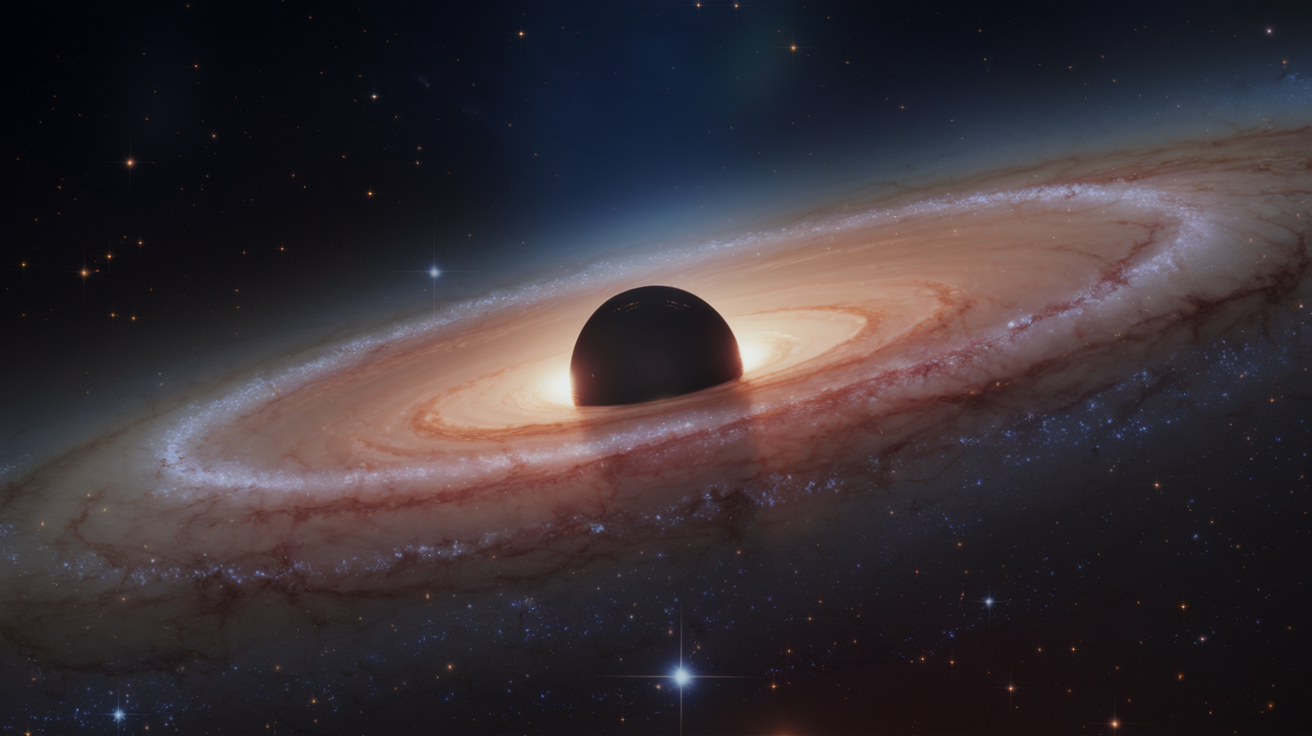A team of scientists has proposed a groundbreaking model that eliminates one of the most puzzling elements in physics: the black hole singularity—where conventional theories break down.
If you were to design an object to remain endlessly mysterious and scientifically unsettling, a black hole would be hard to beat.
At its boundary lies a one-way surface known as the event horizon—the point beyond which gravity is so intense that not even light can escape. Because of this, no information can return from inside a black hole, meaning we can’t directly observe or measure what resides at its core.
Using Einstein’s 1915 theory of gravity—general relativity—scientists have modeled black hole interiors. However, these models predict a singularity, where values like density and curvature spike to infinity. At this point, all known laws of physics cease to apply.
But a new theory suggests that black holes may not contain a singularity at all—essentially offering a more “normal” version of these extreme objects.
“The singularity is the most mysterious and problematic part of a black hole. It’s where our concepts of space and time truly collapse,” said Robie Hennigar, a researcher at Durham University in England. “If black holes do not have singularities, then they are much more ordinary.”
A Workaround Using “Effective Theory”
Many physicists believe general relativity must be replaced by a more fundamental theory when gravity becomes overwhelmingly strong and space-time is highly curved. A long-sought goal has been a quantum theory of gravity—one that merges general relativity with quantum mechanics into a unified “theory of everything.”
Now, instead of using a full quantum gravity theory, the team has applied an effective theory—a modified version of classical gravity that simulates quantum effects. This approach tweaks Einstein’s field equations, so gravity behaves differently under extreme conditions, ultimately removing the singularity from black hole interiors.
So What Replaces the Singularity?
According to the researchers, the collapse of space-time doesn’t continue indefinitely. Instead, it halts and is replaced by a static, highly curved region at the core.
“This inner region doesn’t contract, meaning an observer could, hypothetically, exist there—if they could survive the immense but finite gravitational forces,” Molina-Niñirola said.
Interestingly, these black holes remain pure vacuum solutions. They contain no matter by default, although matter can be included if needed.
“It might sound odd, but in both general relativity and our modified model, black holes can exist even in the absence of matter,” Hennigar added.
Still Searching for a Unified Theory
Even if this model proves correct, it won’t eliminate the need for a complete quantum gravity theory. In fact, black holes—and especially their final stages of collapse—highlight just how limited our current understanding is.
“The final moments before reaching a singularity involve both extreme gravity and quantum effects. This shows general relativity alone isn’t enough,” said Hennigar.
A Portal to Another Universe?
While this theory removes singularities, it introduces new questions. For example, where does the matter go if it doesn’t reach an infinite collapse?
According to the team, matter may re-emerge through a white hole—a theoretical object that ejects matter—in a different universe or disconnected region of our own.
“This proposal has its own complications, and we’re now investigating them to test our model’s robustness,” Molina-Niñirola noted.

Can We Ever Observe These Effects?
Although we can’t look inside a black hole, we may detect hints of singularity-free models through indirect observations.
“The effects that resolve singularities likely occur in extremely strong gravity, beyond current observational capabilities,” Molina-Niñirola admitted.
Still, gravitational waves—ripples in space-time—could help. These waves allow us to probe gravity under extreme conditions, perhaps exposing signs of physics beyond general relativity.
Moreover, if the team’s model is accurate, it should leave an imprint in the early universe—particularly during the inflationary era just after the Big Bang.
“Detecting a primordial gravitational wave background could offer indirect evidence,” Molina-Niñirola said. “Another possibility is through Hawking radiation: if black holes evaporate without a singularity, the end result may be a microscopic black hole, which could even account for dark matter.”
Read our previous article: Greenwich Observatory’s Lost Legacy?


